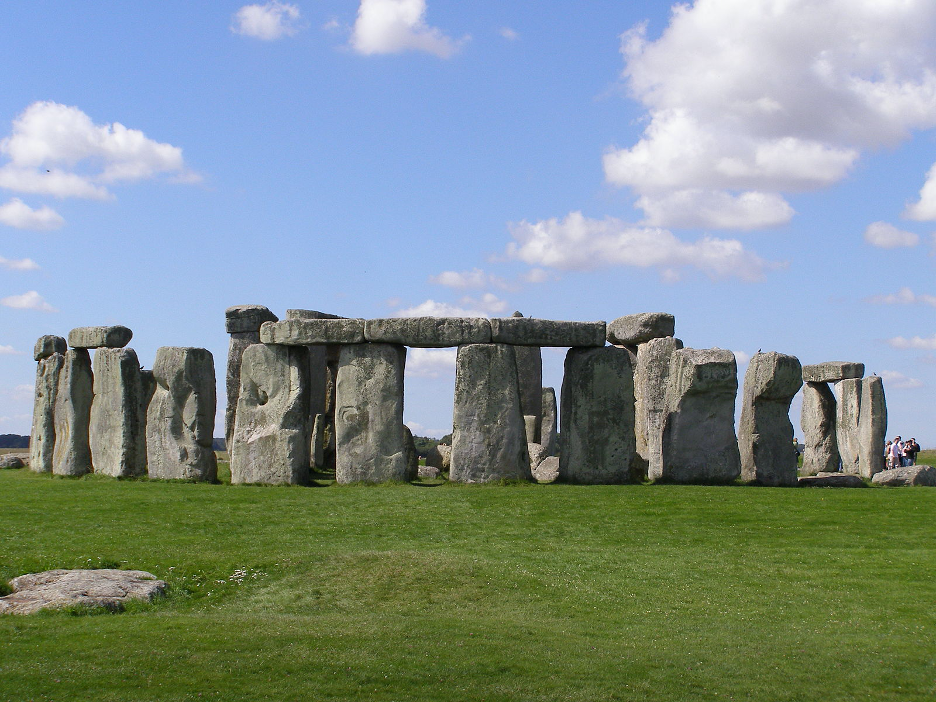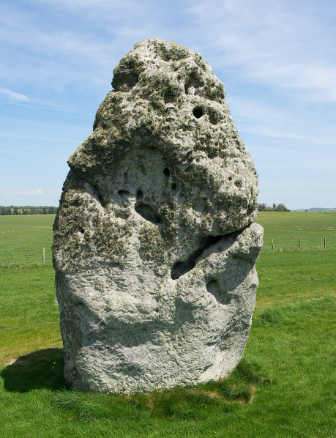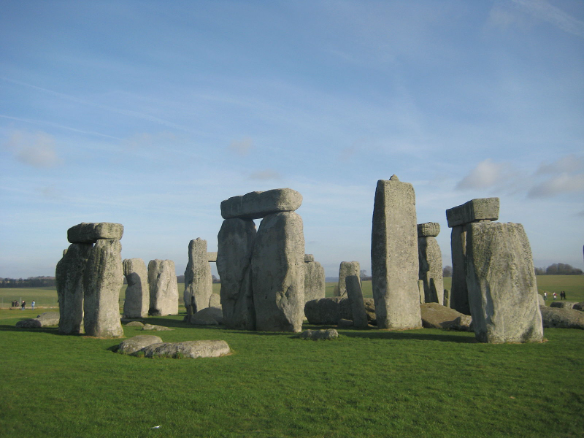On the Salisbury Plains in England stands Stonehenge (3.36), one of the most famous megalithic monuments from ancient times. The Neolithic people were nomadic but transitioned to farming after discovering wild cereal wheat could be harvested and the seeds used to plant the next year again. Hunting was a supplementary food source and provided the necessary elements for clothing, bones for tools, and fat for cooking. The area also had abundant water, timber, and stone for construction and housing, provisions needed by the Neolithic people who inhabited the area, probably lived in small groups or tribes organized into clusters of houses with roofs, doors, and flooring. There is evidence of shelving for storing food, and skins laid on the floor for sleeping.

3.36 Stonehenge
Stonehenge itself is an art form consisting of giant stones carved into individual posts and supporting lintels. Construction of Stonehenge started in 3100 BCE as an earthwork enclosure with a circular ditch surrounding the henge; along the ditch, multiple graves discovered by scientists. The henge complexes built in the traditional bank-and-ditch methods, a circular ditch excavated with simple tools, and the dirt banked up around the outside of the ditch. This ditch is common to all henges and a tell-tale sign of henge construction for archeologists. Early builders of henges may have used wood instead of stones. Archeologists estimate the complete construction of Stonehenge lasted hundreds of years after the initial henge formed; however, it was a very complex effort by peoples with few tools. The megalith stones had to be quarried, transported by land, river, and sea.
There are two distinct circles of stone; the outermost stones are the enormous sarsen stones, and the smaller bluestones from the inner circle. Archeologists believe the sarsen stones, weighing approximately 25 tons each and four meters high, are sandstone from an area called Marlborough Downs, twenty-nine kilometers away from the construction site. The eighty smaller bluestones were added to the site abound 2300 BCE, each stone weighing two to four tons, and archeologists estimate the stone was from Wales, over 250 kilometers away. The most massive stone, known as the Heel Stone (3.37), is over 30 tons and stands on the main avenue to the site, the use of the stone unknown. However, during the summer solstice, the sun rises behind the stone and shines into the circle.


3.37 Heel Stone 3.38 Mortise and tenon joints
As evidenced by all the stone debris in the fields surrounding Stonehenge, the massive stones were shaped by hand using hammer stones. Great rocks tools helped to chip away at the stone for shaping, and smaller stones fashioned into tools used to smooth the surfaces before they lifted them into place. The Neolithic people set 30 stones in a circle using a post and lintel construction technique. Stonecutters carved a mortise and tenon joint (3.38) on the top of the stones to secure the capstones in place. How the stones raised is still unknown; however, archeologists believe a large hole dug next to the stone and the stone raised into the hole becoming upright. The hole may have been lined with wood so the stone could easily slide into the hole and then packed with rock and dirt, or some archaeologists think they may have used an A-frame structure and ropes to help set the rocks into place.
“Stonehenge” is not the only henge structure in England. The Neolithic people used wood and stone to build henges, and they are scattered all over England, Scotland, and Ireland. The impact on Neolithic society is not well known. There is no written word to decipher the stone henges, but scientifically we know that the stones aligned to the solstices of the sun. Because none of the Neolithic inhabitants of Britain had any known or surviving recorded language, there is very little known about its history or culture.





